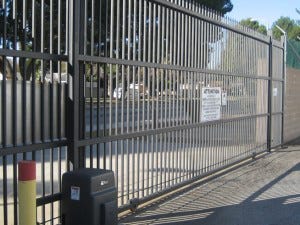WUHAN, China — Russell Abney raised two children on
solar power. The 49-year-old Georgia Tech graduate worked for the last decade in Perrysburg, Ohio, a suburb of Toledo, pulling a good salary as an equipment engineer for the largest American
solar-panel maker.
On the other side of the world, Gao Song boasted his own
solar success story. A former organic fruit retailer who lives in the dusty Chinese city of Wuhan, he installed
solar panels on his roof four years ago and found it so lucrative that he went into business installing them for others. By last summer, he and a team of 50 employees were installing solar-panel systems on nearly 100 roofs a month.
Then China shook the global
solar business — and transformed both their lives.
“A small vibration back in China,” said Frank Haugwitz, a longtime solar industry consultant in Beijing, “can cause an avalanche in prices around the world.”
Late last summer, Chinese officials began publicly toying with slashing the subsidies they offer domestic
solar-panel buyers. Mr. Gao’s business dried up, and he laid off half his workers. “I have been working hard and was just off to a good start,” he said. “Now I have to start over.”
China’s solar-panel makers cut their prices by more than a quarter to compensate, sending global prices plummeting. Western companies found themselves unable to compete, and cut jobs from Germany to Michigan to Texas and points beyond.Continue reading the main story
Those points included Perrysburg — where Mr. Abney and about 450 other employees suddenly found themselves out of work. “Within just a few months, it all came crashing down,” Mr. Abney said. “It’s like a death in the family.
People feel awkward talking about it.”
President Trump, who pressed President Xi Jinping of China on trade and other issues this week when they met at Mar-a-Lago in Palm Beach, Fla., has vowed to end what he calls China’s unfair business practices. Much of his oratory has involved old-fashioned smokestack industries like steel — industries in which the jobs were already
disappearing even before the rise of China.
But economists and business groups warn that China’s industrial ambitions have entered a new, far-reaching phase. With its deep government pockets, growing technical sophistication and a comprehensive plan to free itself from dependence on foreign companies, China aims to become dominant in industries of the future like renewable energy, big data and self-driving cars.Photo
With solar, it has already happened. China is now home to two-thirds of the world’s solar-production capacity. The efficiency with which its products convert sunlight into electricity is increasingly close to that of
panels made by American, German and South Korean companies. Because China also buys half of the world’s new solar panels, it now effectively controls the market.
For much of the past century, the ups and downs of the American economy could spell the difference between employment or poverty for people like Chilean copper miners and Malaysian rubber farmers. Now China’s policy shifts and business decisions can have the same kind of global impact once wielded by power brokers in Washington, New York and Detroit.
The story of China’s rise in solar panels (for example:
GOAL ZERO GUIDE 10 PLUS SOLAR KIT ) illustrates the profound difficulties the country presents to Mr. Trump, or to any American president. Its size and fast-moving
economy give it the ability to redefine industries almost on a dime. Its government-led pursuit of dominance in crucial industries presents a direct challenge to countries where leaders generally leave business decisions to the businesses themselves.
Already, China is the world’s largest maker and buyer of steel, cars and smartphones. While it does not necessarily dominate those industries, its government ministries are moving to replicate that success with robots, chips and software — just as in solar.
Chinese panel makers “have the capital, they have the technology, they have the scale,” said Ocean Yuan, the chief executive of Grape Solar, a distributor of solar panels based in Eugene, Ore. Of American rivals, he said, “they will crush them.”
Rooted in Fish
Before he became one of the solar industry’s most powerful players, Liu Hanyuan raised fish.
The son of peasants from China’s hardscrabble southwest, Mr. Liu sold some of the family’s pigs in 1983 for what was then around $100 to buy some fish. Soon he went into the even more lucrative business of selling fish feed, and he eventually moved into pig feed and duck feed. The brand name, Keli, is a combination of the first and last Chinese characters from a famous paraphrasing of Karl Marx by Deng Xiaoping, the father of modern China: Science and technology are primary productive forces.
According to Mr. Liu’s authorized biography, he faced local criticism at first for his early embrace of capitalism, and responded by saying that his fish feed was an improved product that followed Deng’s dictum. “When my business grows bigger,” he said at the time, “I will build another floor for labs.”
Plans to shift into computer chips did not pan out, so by 2006, he shifted to solar technology, after taking control of a company that made chemicals for the production of polysilicon, the crystalline raw material for solar panels. That move proved fortunate: China was just then embarking on a concerted effort to become a solar-industry powerhouse.
Over the next six years, Beijing pushed state-owned banks to provide at least $18 billion in loans at low-interest rates to solar-panel manufacturers, and encouraged local governments to subsidize them with cheap land. China had more on its mind than just dominating solar exports: Its severe pollution problems and concerns that rising sea levels from climate change could devastate its teeming coastal cities lent urgency to efforts to develop green
technology. At the same time, China also became a major player in wind power through similar policies.
With ample assistance, China’s solar-power production capacity expanded more than tenfold from 2007 to 2012. Now six of the top 10 solar-panel makers are Chinese, including the top two, compared with none a decade ago. The solar division of Mr. Liu’s company, the Tongwei Group, which discloses few financial details, is one of the fastest-expanding players in the industry.
That growth forced many American and European solar-panel manufacturers into a headlong retreat. Two dozen of them filed for bankruptcy or cut back operations during President Barack Obama’s first term, damaging the heady optimism then about clean energy.
In 2012 and 2013, the United States and the European Union concluded that Chinese solar-panel makers were collecting government subsidies and dumping panels, or selling them for less than the cost of producing and shipping them. Both imposed import limits. Chinese manufacturers and officials denied improper subsidies and dumping, and still do.
Several large Chinese manufacturers that had previously overexpanded and had been selling at heavy losses for years then closed their doors. But Western solar companies say Chinese banks still lent heavily to the survivors despite low loan-recovery rates from the defaults of big Chinese solar companies like Suntech, Chaori and LDK Solar.
“The main subsidy is massive, below-market loans by Chinese state-owned commercial banks to finance new capacity and also the massive ongoing losses of Chinese companies,” said Jürgen Stein, the president of American operations for SolarWorld, a big German panel maker.
Newsletter Sign UpContinue reading the main story
DealBook
DealBook delivers the news driving the markets and the conversation. Delivered weekday mornings and afternoons.
Sign Up
You agree to receive occasional updates and special offers for The New York Times's products and services.
SEE SAMPLE
PRIVACY POLICY
OPT OUT OR CONTACT US ANYTIME
Li Junfeng, a top architect of China’s renewable-energy policies until he retired from that responsibility in early January, said that the West had exaggerated the role of the state in helping to finance Chinese solar-panel manufacturers. “The market can decide for itself,” he said. “The good companies can get money, the bad companies cannot.”
High-Tech Hopes
Like the Chinese solar industry as a whole, Tongwei is thinking bigger.
Mr. Liu’s company bought an enormous solar-panel manufacturing complex in central China in 2013 from LDK Solar, which had run into severe financial difficulties. Now it plans to build factories of five gigawatts apiece in the Chinese cities of Chengdu and Hefei. By comparison, the entire global market is only about 77 gigawatts each year, while world capacity is 139 gigawatts.
At the same time, Mr. Liu is dismissive of companies in the West that pioneered many solar technologies but have lost their market shares to China. “They are very jealous,” he said, “and cannot catch up with China’s pace.”
From an environmental standpoint, China’s solar push has been good for the world. Solar-panel prices have fallen close to 90 percent over the past decade. Many of the solar panels in America’s backyards and solar power plants are made by Chinese companies.
But for the solar industry, Chinese expansion could mean an extended period of low prices and cutbacks for everybody else.
“The solar industry is facing again, I would say, a new winter,” said Patrick Pouyanné, the chairman and chief executive of Total, the French oil and gas giant, which owns a controlling stake in SunPower, an American solar-panel maker.
China now hopes to replicate its solar industry’s growth in other areas.
Under a plan called Made in China 2025, China hopes to become largely self-sufficient within seven years in a long list of industries, including aircraft, high-speed trains, computer chips and robots. The plan echoes the solar-panel and wind-turbine buildup a decade ago, but with a larger checkbook. Made in China 2025 calls for roughly $300 billion in financial backing: inexpensive loans from state-owned banks, investment funds to acquire foreign technologies, and extensive research subsidies.
If successful, Made in China 2025 would represent a fundamental shift in how China deals with the world. Initially, most of the industries that moved to China, such as shoe and clothing production, were already leaving the United States anyway. Heavy industries such as steel followed. While the shift was profound — some economists estimate that up to 2.4 million American jobs were lost to China from 1999 to 2011, though others dispute that analysis — China has struggled in some areas like autos to create viable global competitors.
American and European business groups have warned that the China 2025 plan means that a much wider range of Western businesses will face the same kind of government-backed competition that has already transformed the solar industry.
“The policies started in solar and are now starting to infect the higher reaches of the economy with Made in China 2025,” said Jeremie Waterman, the president of the China Center at the United States Chamber of Commerce in Washington.




